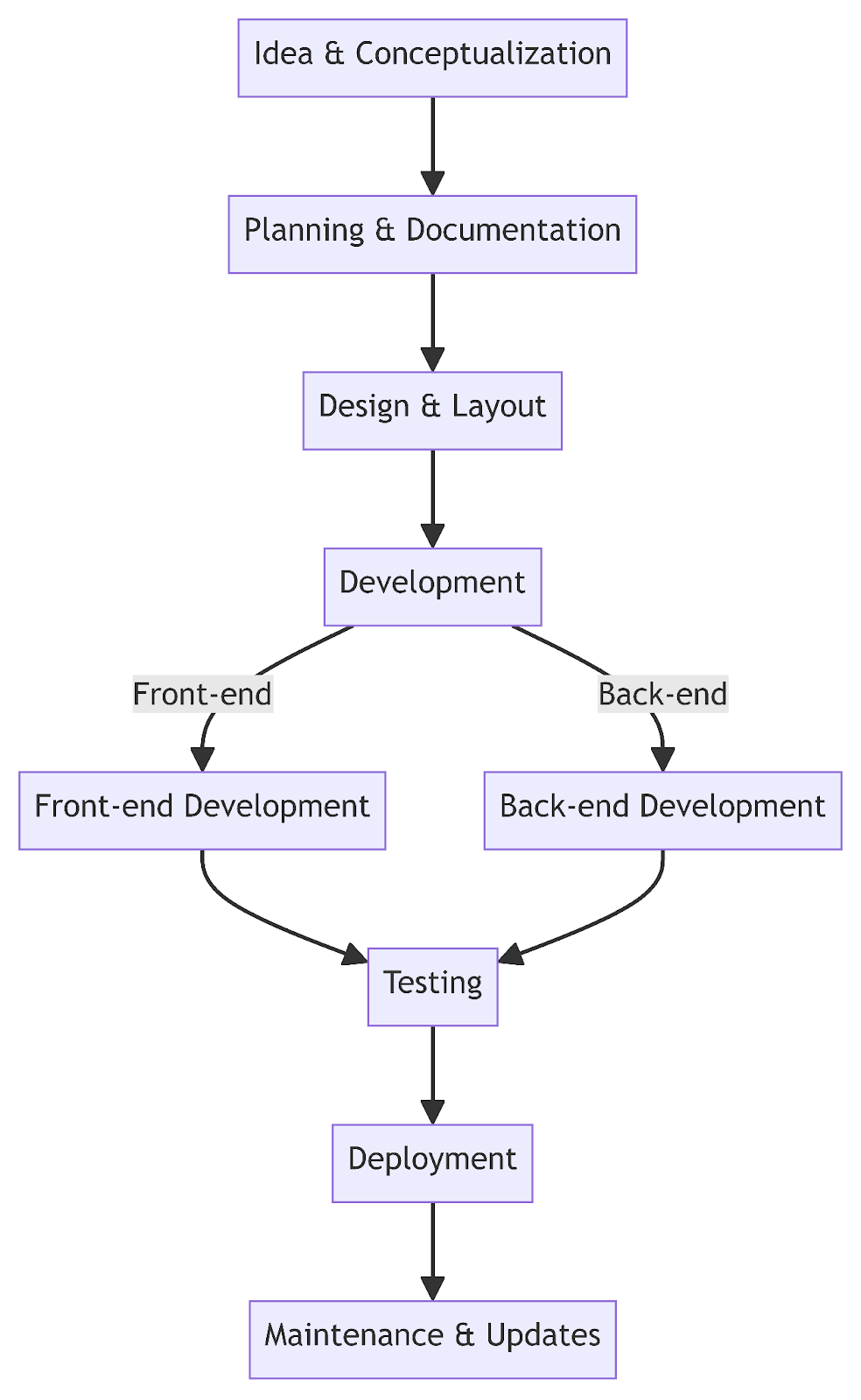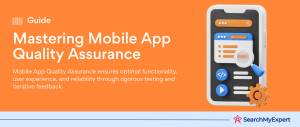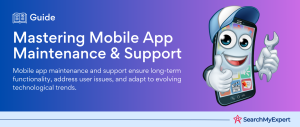When we talk about making apps, we often imagine lots of computer code, busy tech people, and tricky computer stuff. But making an app is like building a house– you put it together piece by piece. Let’s see how this works.
1. Setting Up the Environment:
Before any actual coding begins, developers prepare the environment. It means choosing the right platform (iOS, Android, or both), setting up development tools, and ensuring they have access to essential libraries and frameworks.
For instance:
- For Android development, they might set up Android Studio.
- For iOS, it could be Xcode.
2. Front-end and Back-end Development:
The development is typically divided into two main areas:
- Front-end Development: This is what users see and interact with. It’s similar to the decor of a house. Every button, animation, and text users come across is crafted in this phase. Key aspects include:
- User Interface (UI): Developers ensure that the design created in the design phase gets implemented correctly. It means positioning elements, choosing the right animations, and ensuring responsiveness.
- User Experience (UX): While closely linked with design, in the development stage, UX means ensuring the app’s flow is logical and intuitive. It’s all about smooth transitions and quick loading times.
- Back-end Development: Think of this as the foundation and structure of a house, hidden behind the walls but holding everything together. Important elements include:
- Database Management: Where will the app store its data? Whether it’s user profiles or game scores, a database system gets chosen and implemented.
- Server-Side Logic: This is where the app’s ‘thinking’ happens. For example, when you search for a product in a shopping app, the server processes this request and sends back relevant results.
- API Integration: Sometimes, apps need to communicate with other apps or services. This integration is managed through APIs (Application Programming Interfaces).
3. Version Control:
Developers often use systems like Git for version control. It allows multiple developers to work on the app simultaneously, track changes, and revert to previous versions if needed. Think of it as a super-powered ‘undo’ button.
4. Prototyping:
Before the complete app is developed, a prototype or an ‘alpha version’ might be created. This basic version lets developers and stakeholders see how the app will function. It’s a crucial step to ensure everyone is on the same page and to make refinements before too much time is invested.
5. Iterative Development:
Rarely is an app developed in one go. It undergoes iterations. Initial versions are built, reviewed, and then improved upon. This cycle continues until a polished ‘beta version’ is ready, which is closer to the final product.
6. Integration of Third-Party Services:
Many apps integrate third-party services for functionalities like payments (e.g., Stripe or PayPal), maps (like Google Maps), or analytics (such as Google Analytics). This integration happens during the development phase.
7. Optimization and Refinement:
After the initial development, the focus shifts to optimizing the app. This means making sure the app runs quickly, doesn’t drain the device’s battery, and uses memory efficiently.
- Performance Tuning: If an app lags or freezes, users can quickly become frustrated. Developers use various tools and techniques to monitor app performance and make the necessary tweaks. This ensures that animations are smooth, and tasks like loading or processing data are efficient.
- Memory Management: Especially in devices with limited memory, it’s crucial that the app doesn’t consume more resources than necessary. Memory leaks – where unused objects linger in the system – are identified and plugged.
8. Scalability Considerations:
Developers anticipate the app’s growth. An app designed for a few hundred users might face issues when it reaches thousands or millions. Here, the infrastructure and code are crafted so that it can handle more users, more data, and increased interactions without hitches.
9. Security Measures:
In today’s digital age, security cannot be overlooked. During the development phase:
- Data Encryption: Developers use techniques to ensure that the data being transferred and stored is encrypted, meaning it’s coded in a way that unauthorized entities can’t decipher it.
- Authentication and Authorization: These processes ensure that only valid users access the app and that they can only perform actions they’re permitted to.
- Regular Security Audits: Developers employ tools and even external services to probe the app for vulnerabilities, ensuring that potential exploits are addressed before the app goes live.
10. Continuous Integration and Continuous Deployment (CI/CD):
In modern app development, there’s a push towards releasing features and fixes more rapidly. CI/CD pipelines automate the processes of integrating new code and deploying it, ensuring faster, more consistent delivery without manual intervention.
11. Cross-Platform Development:
In our tech-savvy world, users are spread across various devices and operating systems. A significant consideration during development is whether to build a native app for each platform (iOS, Android) or opt for a cross-platform solution.
- Native Development: This involves creating separate apps for each platform using their dedicated languages and tools. For instance, Swift for iOS and Kotlin for Android. The advantage? High performance and the ability to leverage platform-specific features. However, it can be more time-consuming and costly since you’re essentially building multiple versions of the same app.
- Cross-Platform Development: Tools like Flutter, React Native, or Xamarin allow developers to write code once and deploy it across multiple platforms. This saves time and resources. The potential downside? There might be limitations in accessing some native features, or the performance might not be as optimized as native apps.
12. Feedback Loop:
Engaging stakeholders during the development phase is crucial. This doesn’t only mean the main clients or financiers but can include potential users, team members from other departments, or beta testers.
- Internal Testing: Often, team members from different departments (like marketing or customer support) are given early versions of the app. Their fresh eyes can spot issues or suggest improvements from a non-technical perspective.
- Beta Testing: Before an official release, the app might be rolled out to a select group of users. Their real-world usage provides invaluable feedback, helping identify any overlooked bugs or areas for enhancement.
13. Documentation and Commenting:
As the code grows, it’s vital to maintain clarity. Good developers don’t just write code—they write ‘readable’ code.
- Commenting: Throughout the coding process, developers insert comments—notes that explain what a particular piece of code does. This aids anyone who later reviews or modifies the code.
- Documentation: This is a more detailed, organized collection of notes about the app. It covers everything from its architecture, functions, known issues, to usage guides. Proper documentation is essential, especially if the development team changes or the app undergoes significant modifications in the future.
14. Preparing for Post-Release:
Even as the app nears completion, developers plan for what comes after. This includes:
- Monitoring Tools: Integrating systems that will monitor the app’s performance in real-time, alerting developers to any unexpected issues.
- Feedback Mechanisms: Implementing ways for users to easily report bugs or suggest features, ensuring that the app continues to evolve based on user needs.
15. User Onboarding:
As development wraps up, focus shifts to the user’s first experience with the app. The initial interaction can be pivotal.
- Guided Tours: Developers often integrate walkthroughs or tutorials for first-time users. These guides highlight key features and offer a brief overview of how to navigate the app.
- Simplified Sign-Ups: Streamlining the registration process, perhaps by allowing sign-ups through existing accounts like Google or Facebook, ensures a frictionless entry for new users.
16. Localization and Globalization:
In an interconnected world, apps often cater to a global audience. Developers factor in this international reach during the development phase.
- Localization: Adapting the app to various regions by translating text and adjusting to local customs or regulations.
- Globalization: Ensuring the app’s underlying structure supports various currencies, date formats, or languages, allowing for easier future expansions.
17. Accessibility Enhancements:
An inclusive app caters to all users, including those with disabilities.
- Screen Readers: Developers ensure compatibility with screen readers, tools that read out textual content for visually impaired users.
- Contrast and Font Adjustments: Features allowing users to adjust font size or contrast levels aid those with vision challenges.
- Gesture Controls: For users with mobility issues, gesture controls or voice commands can be integrated.
18. Preparing for Launch:
As the finish line approaches, there’s a flurry of activity to gear up for the app’s debut.
- App Store Optimization (ASO): Just like SEO for websites, ASO ensures that the app ranks well in store searches. This involves crafting compelling app descriptions, choosing relevant keywords, and designing enticing app icons.
- Promotional Activities: Teasers, press releases, or introductory offers can be planned to create buzz before the launch.
19. Post-Release Analytics:
Once the app is out in the wild, the real feedback begins.
- Usage Metrics: Tools like Google Analytics for Mobile provide insights on how users interact with the app, which features are most used, and potential areas of improvement.
- Crash Reports: Automated reporting can alert developers to any issues causing the app to crash, enabling quick fixes.
20. Continuous Evolution:
In the digital realm, stagnation is a pitfall. Successful apps continually evolve.
- Feature Rollouts: Based on user feedback and changing technological landscapes, new features can be developed and added.
- Regular Audits: Periodic reviews ensure the app stays updated with the latest design trends, security protocols, and tech innovations.
Here is the Chart showing App Development Process

Conclusion
The intricacies of app development go far beyond lines of code. It’s about understanding user needs, foreseeing technological shifts, and marrying functionality with aesthetics. This journey of creation, while challenging, is also immensely rewarding. Each download, positive review, or piece of user feedback stands as a testament to the team’s dedication and the intricate dance of strategy, creativity, and technology. As consumers, recognizing this effort enriches our digital interactions, fostering a deeper bond with the tools we use daily.
Unlock the gateway to premium App Development Companies right now!
Table of Contents
Toggle






